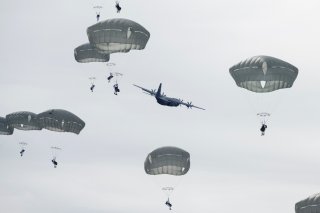Invasion: How Japan Brought War to the United States
As the blockade and bombardment further intensified, the stage was set for Allied amphibious landings that would finally eject Japanese troops from U.S. soil.
In the end, the American ships inflicted fourteen casualties on the Japanese cruiser Nachi, but the Salt Lake City was nearly crippled with the loss of seven sailors after being struck in succession by six 8-inch shells from the Japanese heavy cruiser Maya. The weaker American force disengaged at noon under the cover of a smoke screen, while the Japanese also withdrew, fearing the arrival of U.S. air support.
As a consequence of the inconclusive skirmish, the Japanese Navy ceased sending surface ships to resupply the garrisons on Kiska and Attu, and switched to submarine-only deliveries. This drastically curtailed the supply situation on the Japanese-held islands, and the garrisons began to suffer from low morale and malnutrition.
By mid-1943, the fate of Japan’s Alaskan outpost was sealed. As the blockade and bombardment further intensified, the stage was set for Allied amphibious landings that would finally eject Japanese troops from U.S. soil. The landing on Attu in May 1943 would face three weeks of desperate fighting that culminated in a terrifying, desperate last act of resistance. And the joint American-Canadian assault on Kiska Island three months later would conclude in one of the most embarrassing surprises of the war.
Sébastien Roblin holds a Master’s Degree in Conflict Resolution from Georgetown University and served as a university instructor for the Peace Corps in China. He has also worked in education, editing, and refugee resettlement in France and the United States. He currently writes on security and military history for War Is Boring.
This article first appeared in 2017 and is being reprinted due to reader interest.
Image: Reuters

